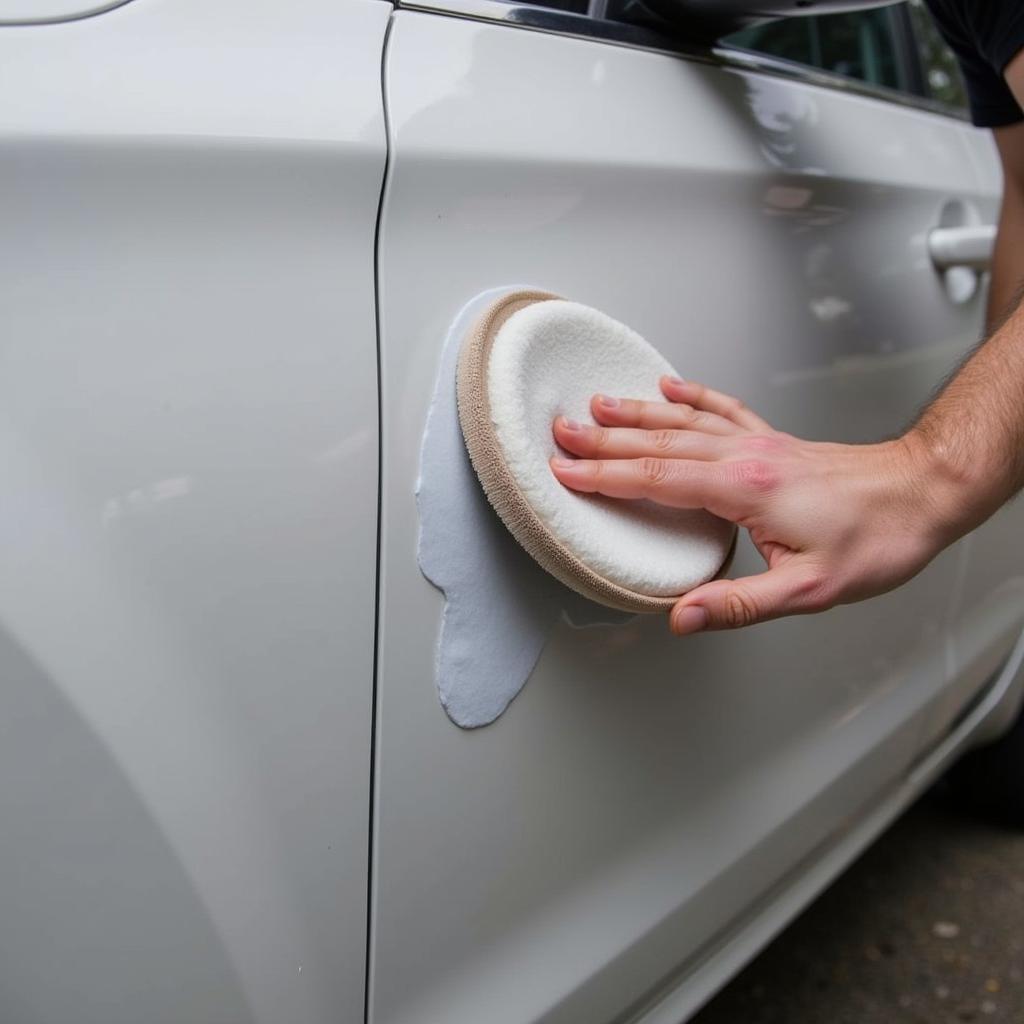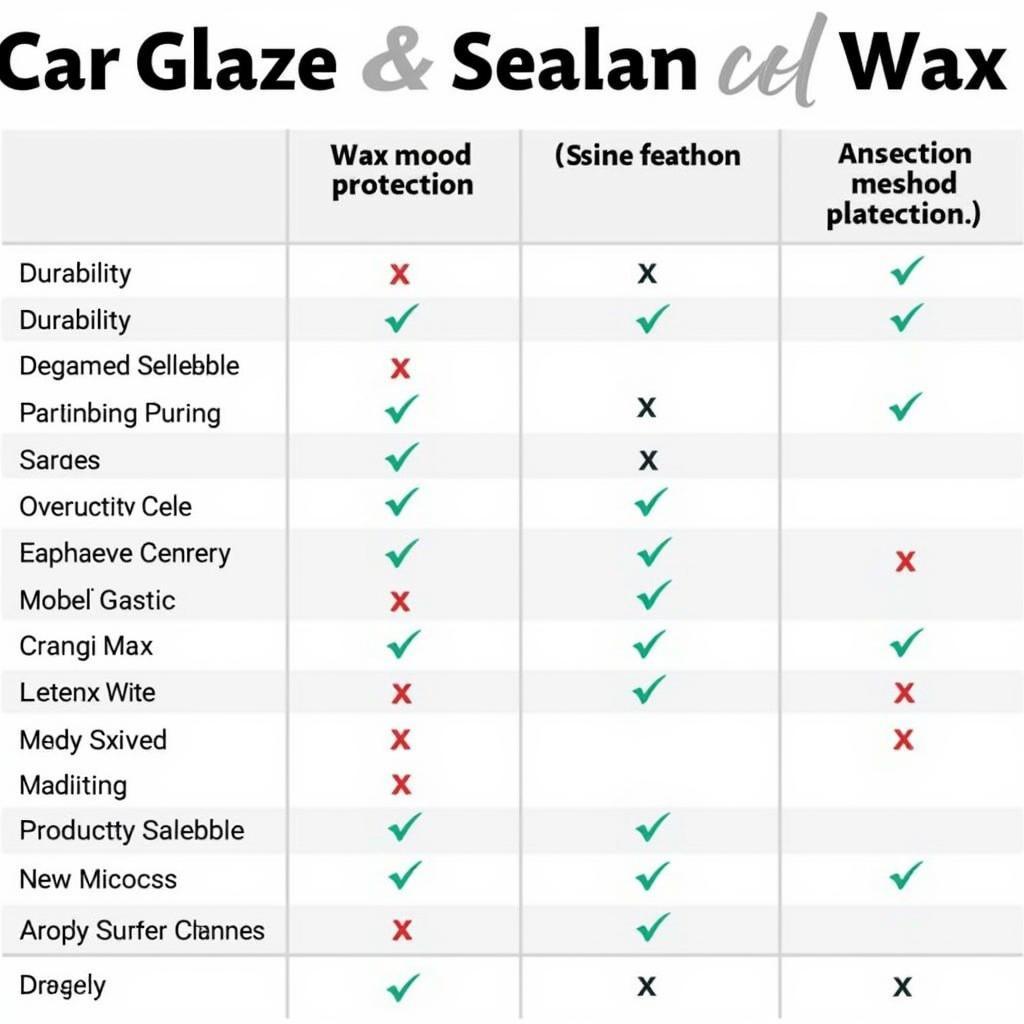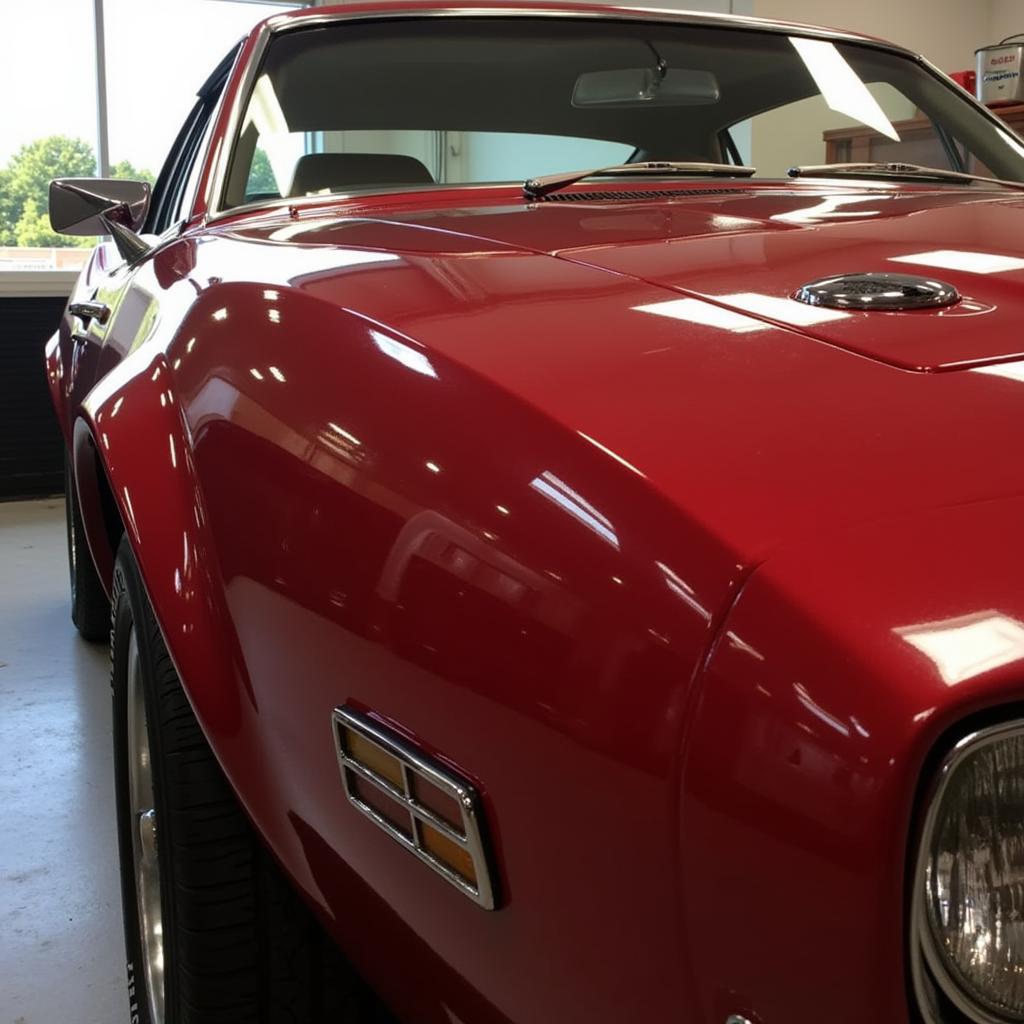Car glaze plays a vital role in the detailing process, enhancing the paint’s appearance after a thorough wash and clay bar treatment. It fills in minor imperfections, creating a smooth, glossy finish that truly makes your car shine. But what does detailing car glaze actually do, and how does it differ from other paint protection products? Let’s delve into the specifics.
Understanding the Purpose of Car Glaze
Car glaze acts as a cosmetic enhancer for your vehicle’s paintwork. Think of it as makeup for your car. It doesn’t offer long-term protection like a sealant or wax, but it excels at masking minor swirls, scratches, and other imperfections that can dull the paint’s appearance. The glaze fills these microscopic imperfections, creating a perfectly smooth surface that reflects light evenly, resulting in a deep, glossy shine.
How Car Glaze Works Its Magic
Car glazes are typically oil-based and contain fillers that level out the paint’s surface. These fillers are designed to sit on top of the paint, rather than bonding with it like a sealant. This characteristic allows the glaze to effectively hide minor imperfections and create a smooth, reflective surface. The oils in the glaze also contribute to the enhanced gloss, adding depth and richness to the paint’s color.
 Applying Car Glaze to a Car’s Paint
Applying Car Glaze to a Car’s Paint
Car Glaze vs. Sealant vs. Wax: Key Differences
While car glaze focuses on enhancing appearance, sealants and waxes prioritize paint protection. Sealants, usually synthetic polymers, form a strong bond with the paint, creating a durable barrier against UV rays, contaminants, and environmental factors. Waxes, traditionally made from natural carnauba, offer similar protection but with a warmer, more natural shine. Unlike glaze, both sealants and waxes offer measurable protection that lasts for several months.
Choosing the Right Product for Your Needs
Choosing between glaze, sealant, and wax depends on your priorities. If your goal is to maximize shine and hide minor imperfections, car glaze is the ideal choice. If protection is paramount, opt for a sealant or wax. You can even layer glaze over a sealant or wax to combine the benefits of both – the protection of the sealant/wax and the shine enhancement of the glaze.
 Comparison of Car Glaze, Sealant and Wax
Comparison of Car Glaze, Sealant and Wax
Applying Car Glaze: Tips for Optimal Results
Applying car glaze effectively involves a few key steps. First, ensure the car is thoroughly washed and dried. Ideally, use a clay bar to remove any remaining contaminants. Then, apply a small amount of glaze onto an applicator pad and work it onto the paint in small, circular motions. Let the glaze haze over before buffing it off with a clean microfiber towel, revealing a deep, glossy finish.
Maintaining the Glaze’s Shine
While car glaze doesn’t offer long-term protection, you can prolong its effects with regular washing and detailing. Avoid harsh chemicals and abrasive cleaners, as they can strip the glaze away. Reapply the glaze every few weeks or as needed to maintain the desired level of shine.
 Car with a Glossy Finish After Glaze Application
Car with a Glossy Finish After Glaze Application
Conclusion
Car glaze is a valuable tool for enhancing the appearance of your car’s paintwork. While it doesn’t offer the protection of a sealant or wax, its ability to fill in minor imperfections and create a smooth, glossy surface is unmatched. By understanding what does detailing car glaze do, you can make an informed decision about incorporating it into your detailing routine and achieving that showroom shine.
FAQ
- How long does car glaze last? Typically, car glaze lasts for a few weeks, depending on environmental factors and washing frequency.
- Can I apply car glaze over a sealant or wax? Yes, layering glaze over a sealant or wax enhances the shine while maintaining the protection offered by the underlying product.
- Do I need to use a clay bar before applying car glaze? Using a clay bar is recommended to remove any contaminants that can interfere with the glaze’s application and performance.
- Can I apply car glaze in direct sunlight? It’s best to avoid applying car glaze in direct sunlight, as it can dry too quickly and make it difficult to buff off evenly.
- What type of applicator pad should I use for applying car glaze? Use a soft foam applicator pad to apply car glaze evenly and avoid scratching the paint.
- How often should I reapply car glaze? Reapply car glaze every few weeks or as needed to maintain the desired level of shine.
- Can car glaze remove deep scratches? Car glaze primarily masks minor swirls and scratches; it cannot remove deep scratches that have penetrated the clear coat.
Need further assistance? Contact us via WhatsApp: +1(641)206-8880, or Email: [email protected]. Our customer support team is available 24/7.

Leave a Reply